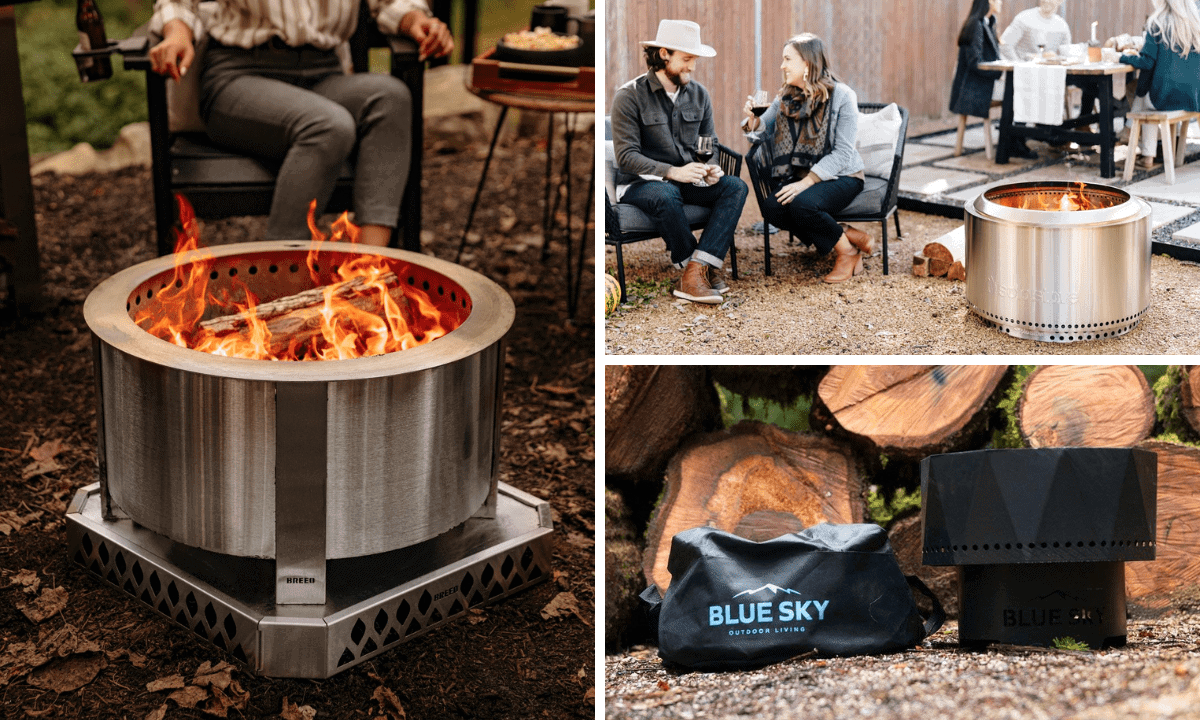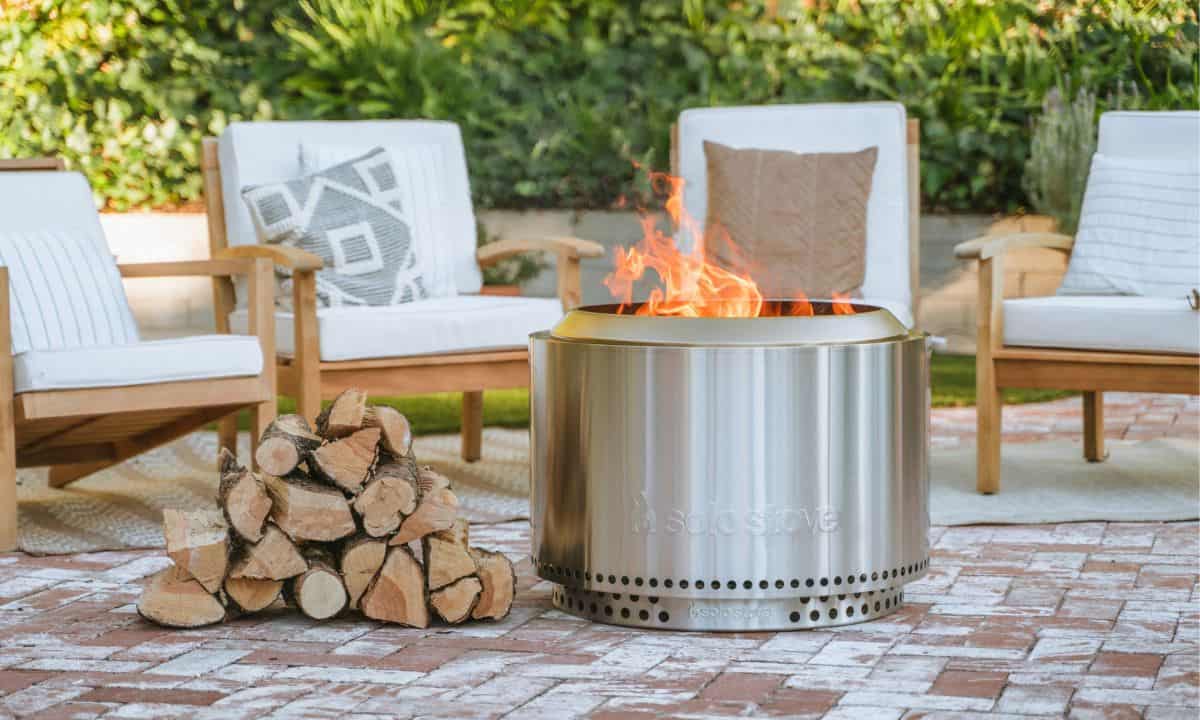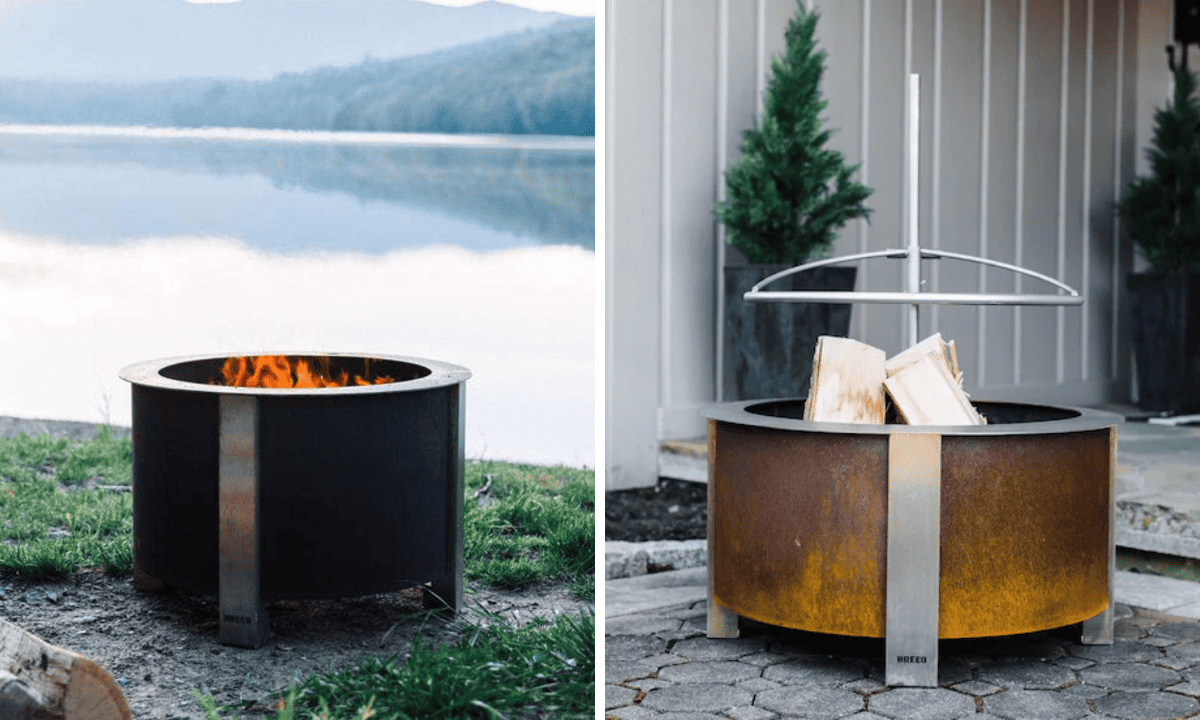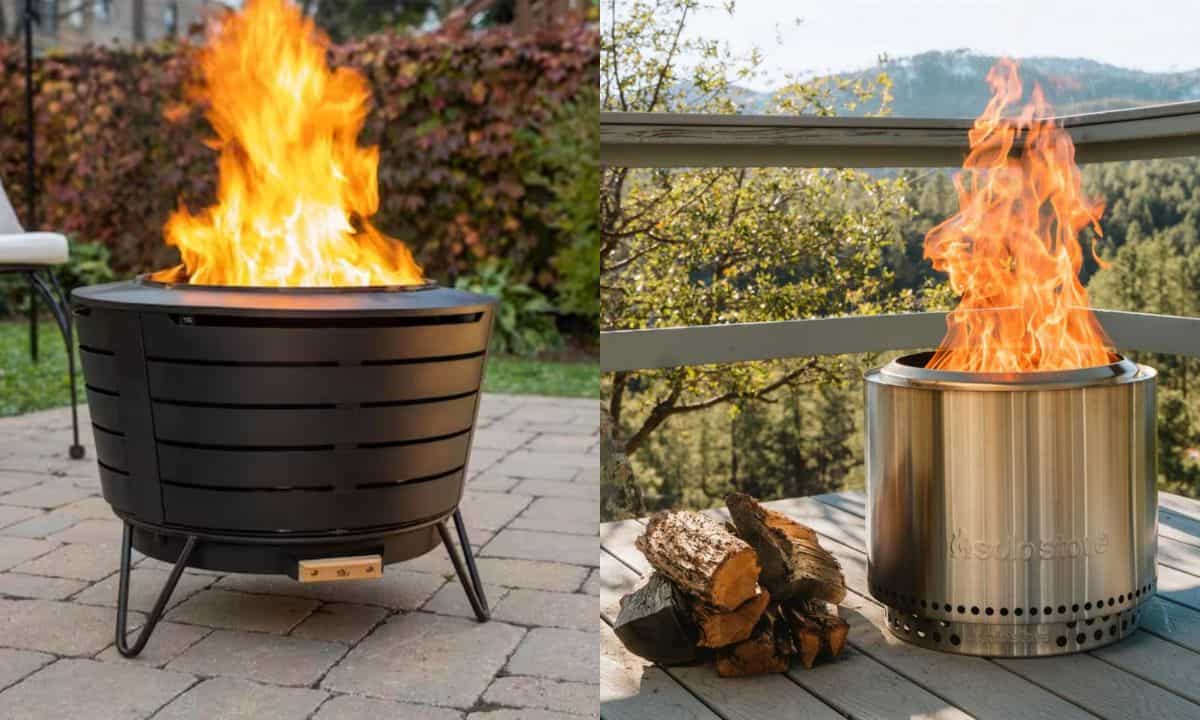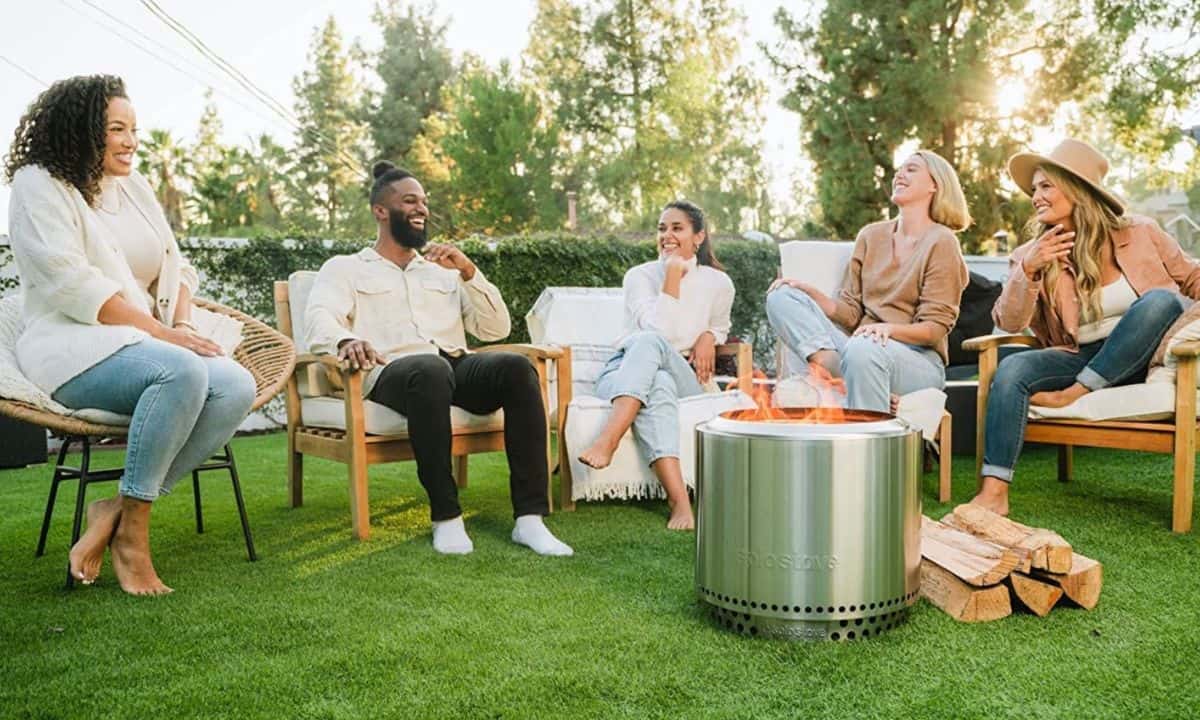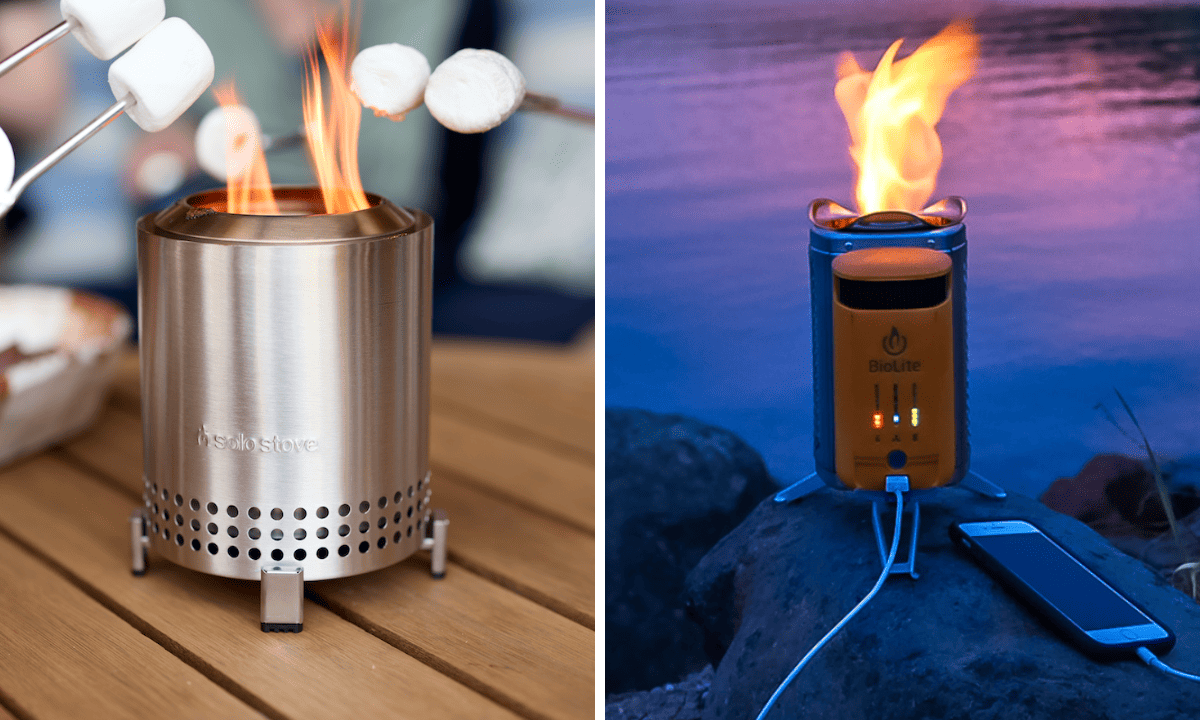Best Fire Pits of 2023
It’s time to gather around the fire pit in our backyards. We’ve tested and tried some of the top fire pits and outdoor stoves out there and share our findings with all of you!
Types of Fire Pits
You can generally categorize fire pits based on their design, the fuel they use, or the material they’re constructed from. Most fire pits fall into at least 3 or more of the categories listed below.
Traditional vs. Smokeless Fire Pits
You’re probably already familiar with a traditional fire pit. In essence, it’s a bowl with some legs on it, or sometimes just a bowl period. They’re basic, but they get the job done.
Smokeless fire pits are a new design of fire pit that’s become increasingly popular in the past couple of years. These fire pits use a unique design that allows air to flow in under the fire and up and through the hollow walls to create a secondary burn.
In short, this means the fire can burn hotter and release less unburned waste into the air, aka smoke. Smokeless fire pits are truly smokeless, but you need to be sure you’re using the proper wood, and avoid putting any foreign material in the fire pit.

Buying Firewood for Beginners — Everything You Need to Know
Propane vs Natural Gas Fire Pits
The difference in performance between a propane and natural gas fire pit is negligible. For all practical purposes, you’ll want to consider the cost, portability, and setup. A natural gas fire pit will require a plumber to install a natural gas line from the main to wherever you’re placing your fire pit.
Running a natural gas line is more expensive up front, but is easier to use and will require next to 0 maintenance compared to a propane fire pit. The benefit of a propane setup is it is portable, however the tanks will need to be replaced semi-frequently, depending on use, and the cost of those propane fill ups will add up.

Gas vs. Wood Burning Fire Pits
Wood Burning vs Pellet Fire Pits
Wood burning fire pits are the most commonly used fire pits, however using wood pellets offers some distinctive advantages. For one, wood pellets are much easier to store. When it comes to purchasing firewood, you typically get the best deal by purchasing a face cord or full cord. The bundles as the gas station or home improvement store and usually a bad value.
With wood pellets, you can get a 50lb bag for less than $10 which will usually last for around 15-25 hours of burn time depending on the size and duration of your fire. These wood pellets can be store inside and do not have a ‘seasoning’ time, like firewood does.
Stainless Steel Fire Pits
Stainless steel is one of the preferred materials for medium to higher end fire pits. It looks good and is durable. However, there are varying grades of stainless steel. 304 stainless steel is the most commonly used around the world today. It provides excellent corrosion resistance and is readily available.
If the fire pit you’re looking to purchase looks like stainless steel, but isn’t advertised as 304 stainless steel – stay away! It likely is a cheaper quality of stainless that will not be able to withstand the high heat and elements.
Cast Iron Fire Pits
Cast iron fire pits bring an age old material with a modern and contemporary look. Cast iron is incredibly versatile and durable. Many cast iron skillets from the 1800’s are still in use today and are coveted because of their build quality.
Cast iron fire pits are durable and have a great look; however, that’s about where the benefits stop. Cast iron is very heavy and is difficult to move. If you want the look, great, otherwise, there are better options available.
In-Ground Fire Pits
As the name suggests, an in-ground fire pit, is a fire pit that has had a cavity dug into the ground for it. While this typically doesn’t provide the greatest air flow for the fire, an in-ground fire pit is normally safer and makes it easier for you to ‘feel’ the heat.
Fire Pit Rings
A fire pit ring or simply, ‘fire ring’, is basically a giant steel band used to contain a fire within a given area. Oftentimes, these rings are made of galvanized steel and do not include a bottom. These are fairly inexpensive, normally under $100 and widely available at most farm supply stores.
Read More: Top Solo Stove Alternatives to Consider
5 Benefits of a Backyard Fire Pit
Entertainment
The most obvious benefit is that by adding a fire pit, you are creating a space for entertaining your family, friends, and other guests. Tell stories, crack jokes, or even make it complementary to another event. As the day carries on and night descends, transitioning to the fire is the only natural next step, apart from calling it a night and going inside.
No matter the season, a fire is a centerpiece that is appreciated by all. Which leads us into our next point.
Multi-Season Space
Most people only use their backyard in the summer or fall when the temperature is warm and the weather ideal. In the colder months, your backyard is likely unused and an afterthought for any additional living space.
A fire pit can change that. Fire pits can be used in the winter and if you have a covered area, this makes the space even more ideal.
Cooking Space
Even if you already have a grill or prefer cooking inside, cooking over a fire is fun and different way to change up the weekend meal. Food cooked over the fire has a different zest to it and adds a new dimension of flavor.
Just ask anyone who owns a Breeo. There’s dozens of different methods for cooking over these fire pits. You can cook soup, steaks, chicken, and even a full rotisserie – the possibilities are virtually endless.
Provides Additional Heat and Light
While this might seem obvious, it’s sometimes an afterthought. A good quality fire pit will add additional ambiance and heat to the area. The natural dancing light given by the flame illuminates the immediate surroundings and the added heat will help keep you warm, but not too warm, on the cooler fall nights.
Great Investment – Adds Value to your Home
Lastly, adding a permanent fire pit along with any benches or stone pieces will add tremendous value to your home. Potential buyers see the backyard in a new light. Instead of just being the ‘backyard’, it’s an additional living space covering all the points already mentioned. The cost of installing a fire pit may be easily justified with the return on investment you get on your home’s value.
Gas vs. Wood Burning Fire Pit
You have a plethora of options when purchasing a fire pit, but one of the tougher decisions is deciding what fuel type you want to work with. Gas is by far the most convenient option. Propane lights instantly and installing a natural gas line ensures you will always have a constant, inexpensive supply of fuel.
However, you can’t replicate the smell, heat output, or flexibility of a wood burning fire pit. Marshmallows just seem to roast better and the smell of a bonfire is something you’re not going to find anywhere else. Take it a step further and you have the flexibility to choose the types of woods you use. Each wood has a different smell and you can pick and choose what you like based on performance and cost.
Fuel Type and Availability
One major downside to a wood burning fire pit is needing to store wood or purchase in smaller batches, which is typically more expensive. We have a guide on how to properly store firewood, but know you’ll need some space around your home.
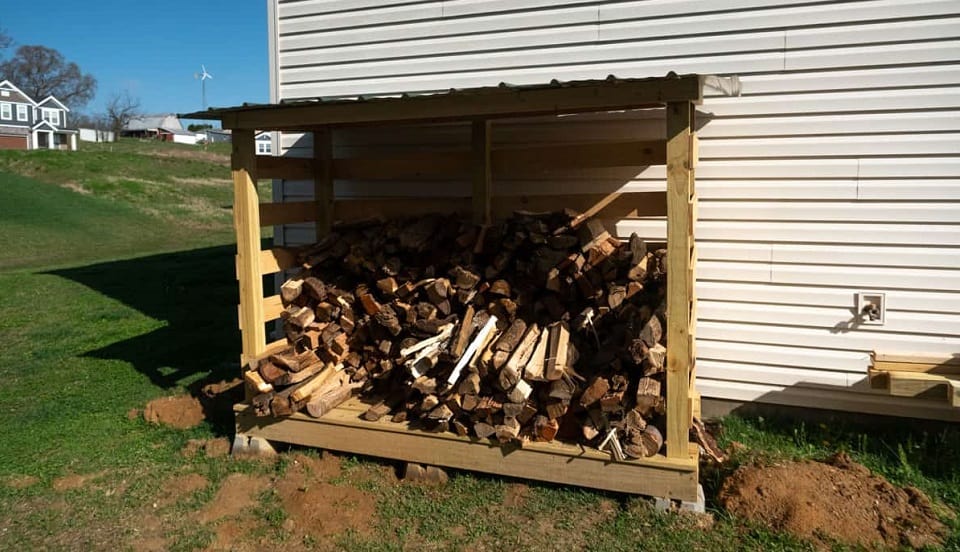
How to Build a Wood Storage Shed
With any gas fire pit, your fuel is propane or natural gas, both of which are clean burning. Propane is readily available at gas stations, campgrounds, and in smaller quantities at many retailers.
For a natural gas setup, you’ll never need to worry about going out to buy your fuel. Instead, it’ll be connected directly to your home’s natural gas supply. The downside is there’s a larger up front cost with this installation.
Cost
A wood burning fire pit is often the most inexpensive option and is why it’s so popular for most people. You purchase a cord of wood for a few hundred dollars and a wood burning fire pit has a set up cost as low as $0.00.
A natural gas fire pit can have a cost of up to several thousand dollars, depending on the complexity of the install. A licensed plumber will be required to run a gas line.
A propane fire pit is somewhere in the middle. A standard propane fire pit can be purchased for a few hundred dollars. The cost to refill a propane tank is relatively inexpensive at around $20 to $30. No installation is needed here.
Ease of Use
Propane and natural gas fire pits are the easiest to operate. Turn the gas on and hit your ignition switch or use a lighter. It takes less than a minute to do and your fire is going strong. There’s no need for fire starters, dealing with wet wood, or having to constantly feed the fire to keep it going.
Performance
This is where a wood burning fire pit shines. When using a properly seasoned hardwood, a wood burning fire pit will almost always have a greater heat output than a gas powered fire pit. While some gas-powered models do have a high heat output, these are rare.
When it’s October and the temperatures have dropped, you want a warm bed of coals at the bottom of your fire pit. These coals put off the continuous heat that keeps your legs and the rest of your body warm.
Best Types of Wood
A well-seasoned hardwood is always the best type of wood for your outdoor fire pit. The fibers in hardwoods are dense, meaning they will burn hotter and longer than softwoods. This means less trips to the firewood stack and greater heat output for you and your guests.
If you prefer to have the familiar crackling and popping sounds coming from the fire, toss in a few logs of a softwood for the effect. These woods crackle and pop due to having more space in between their fibers, which allows for air to move more freely and create the effects you see and hear.
The downside is they burn quickly. Additionally, woods with a higher sap content will create more smoke. Softwoods are great to use for starting fires, but be sure to throw some hardwoods in the mix to make sure you build a strong bed of coals.
How to Make your Fire Pit Warmer
Buying a high quality fire pit from the start is your best bet. A heavy duty fire pit made from thick steel or cast iron will radiate the most heat. This is why the Breeo X-Series is our number 1 pick. It’s made with COR-TEN steel, and with the smokeless design produces a hotter fire.
However, be aware that if you want to have heat radiate toward you, you’ll need a deflector. Again, with the Breeo, most people purchase the grill system and lid – which both can be used as an effective and makeshift heat deflector.
On the other hand, purchasing a heat deflector like the one shown below helps to move heat out, rather than up and away. Remember, heat rises up, not out. If you have a metal trash can lid or or large pizza pan, those may work too.
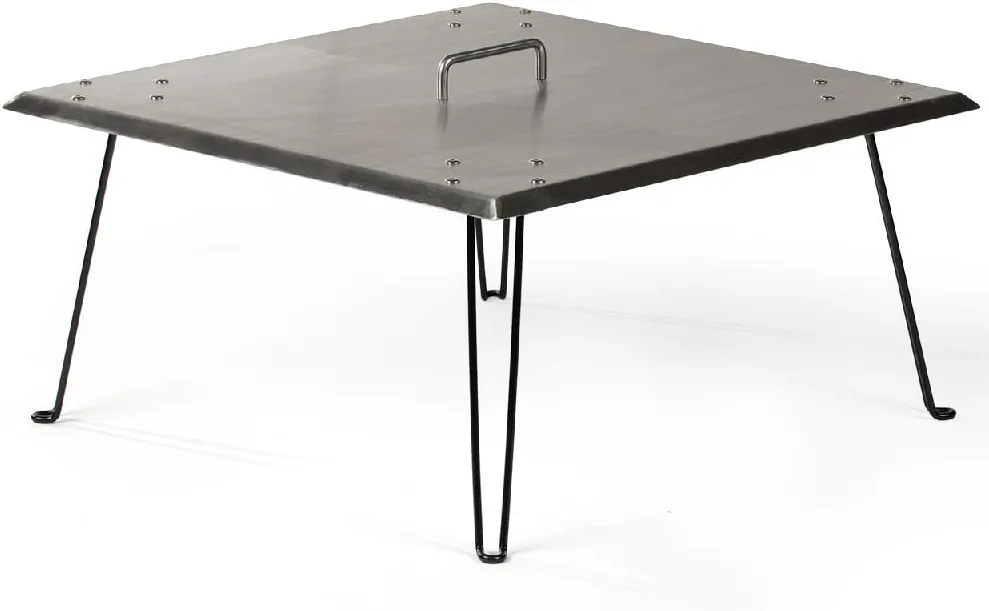
We recommend this Stainless Steel Heat Deflector
Protecting your Fire Pit
Most high end fire pits will be perfectly fine when left out in the elements. However, for any entry-level fire pit (gas or wood burning) or even Solo Stove’s fire pits, you’ll want to take a few extra precautions to prevent premature wear.
For one, don’t put out the fire with water. Instead, allow the fire to burn out by itself. Dumping water on hot metal causes it to contract very rapidly, weakening the metal. You’ll be able to see that some metal will deform or the protective coating will begin flaking away.
Secondly, plan ahead and double check to make sure there is no rain in the forecast for the night. Similar to the first point, it’s better if the fire burns out on its own. Once the fire is completely out and there are no embers present, then it is safe to put the cover over the fire pit.
Read More:
• Solo Stove Ranger vs Bonfire
• Best Fire Pits That You Can Actually Cook On
• Best Fire Pit Chairs for Backyard Setups
More Firepits Articles
Solo Stove Torch Review
I have never been a fan of the Tiki Torch look, mostly because the traditional design was something my grandparents would have back home in Hawai’i. But the Solo Stove Torch took a drastic turn from the norm, and I was intrigued. After testing the…
Top Solo Stove Alternatives to Consider
When shopping for a fire pit to use at your home or cottage, the Solo Stove has earned a remarkable reputation as a trustworthy and high-quality smoke-free pit. But it’s not the only option on the market. Many other fire pit alternatives, including a wide…
Top Breeo Fire Pit Alternatives
Breeo has quickly made a name for itself in the world of outdoor grilling, providing a high-quality fire pit that offers an unmatched grilling experience. These smokeless fire pits are designed to leverage secondary combustion, directing the heat up and out to create an effective…
Best Places to Buy the Solo Stove Online
The best places to buy the Solo Stove online are from the company directly (you’d be surprised at how quickly they ship), from Amazon (check for ‘used but new’ models for some savings), Ace Hardware (yes, you can order online and pick it up or…
Ohuhu vs Solo Stove
I do a lot of camping, but most of what I do requires hiking into the campsite, so everything I bring has to be carried. But I also can’t function without my morning coffee, so I need a camping stove that will work fast, stay lit,…
Duraflame vs Solo Stove
No matter the temperature, people love coming over for dinner and drinks by the firepit. They have loved it even more since I invested in the Solo Stove Bonfire because now, we don’t have to move to the fire; the fire moves to us. I’ve had my…
Best Places to Buy the Breeo Fire Pit Online
The best places to buy the Breeo fire pit online include straight from the manufacturer (for the latest and greatest models/accessories), from Ace Hardware (you can apply lots of discounts and use interest-free payment plans), Home Depot (same thing as Ace but for cool people…
Continue Reading Best Places to Buy the Breeo Fire Pit Online
Breeo 19 vs 24
I have owned a lot of fire pits and camping stoves. I have three fire pits dotting my yard right now and for camping stoves. I don’t even use one of them anymore because it has an odd diameter of only 19 inches and a…
Tiki Fire Pit vs Solo Stove
We moved to an old farm and have renovated four campsites on our property, complete with in-ground and standalone fire pits. Unfortunately, we live in a particularly windy area, and the wind always seems to pick up precisely when I get my fire going. Smoke…
Best Fire Pits That You Can Actually Cook On
If you appreciate the unique flavor of cooking over an open fire, you may be wondering whether your fire pit can also double as an outdoor cooking solution. Bringing together the best of both worlds, the right pit will offer the warmth and ambiance of…
Continue Reading Best Fire Pits That You Can Actually Cook On
Flame Genie vs Solo Stove
I’m a smoke-induced asthmatic who loves hiking, camping, and sitting in front of a bonfire. And over a decade of camping and building outdoor bonfires has proven to me that the smoke knows this; that’s why it picks on me and follows me everywhere. It…
Solo Stove vs Biolite
My first long camping trip was in the Mediterranean. Our campsite was right along the coast where we were deep water soloing (for those who don’t know, it just means rock climbing over the ocean so that when you fall, you can swim back to…




